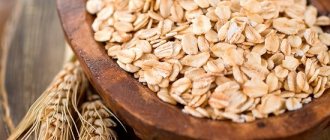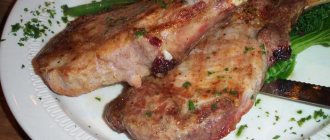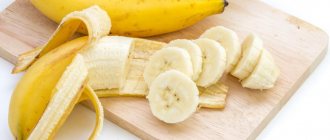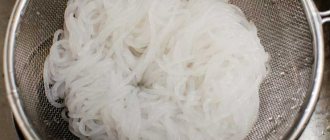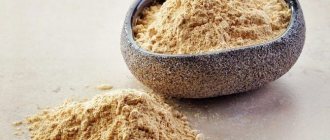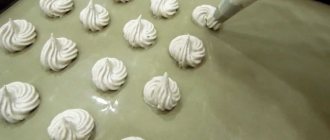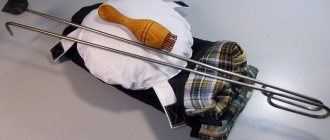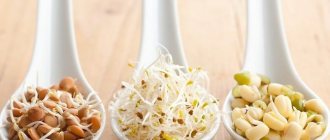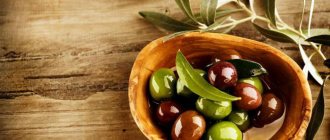In the countries of Southeast Asia, a product called funchose has long been cultivated. Asian cuisine gives preference to a healthy diet; the dishes are original and exotic. One of the ingredients of such cuisine is funchoza - a pasta product without taste, but able to absorb aromas. The second name of the product is “glass noodles”; it is made from starch, which, in turn, is obtained from mung beans. The oriental product has the form of dry thin threads collected in a skein, which become transparent after heat treatment. Pasta is produced in China, Japan, and Korea. This product is also called “winter” or “ice” noodles.
What is funchose?
Funchoza is a product that came to us from Asia, made from dry noodles with seasonings from stewed vegetables. Funchoza is served as a hot or cold dish. Noodles are rarely prepared as a separate, independent dish because they do not have distinct flavors. They like to call funchoza “glass noodles” because when cooked, it becomes transparent and resembles glass.
How to cook at home?
You purchased vermicelli funchose: how to prepare it correctly so as not to spoil the product? If eating healthy is part of your regimen, then you're sure to enjoy these hearty noodles.
Frunchoza is steamed in boiling water for 10 minutes or boiled for 3 minutes. To prevent the vermicelli from swelling and resembling earthworms, immediately remove the contents from the pan and strain under cold water. You can cook glass noodles in a steamer or slow cooker. Watch how to cook noodles without sticking in this video:
In the “steam” mode, cook the semi-finished product for 11-12 minutes until fully cooked. Depending on the thickness of the “threads,” the cooking time may vary. To avoid vermicelli sticking together, add a little sunflower oil when cooking. You can combine funchose with fish, meat, vegetables, mushrooms and seafood. In addition, vermicelli can be added to soup.
How is funchose useful?
Most importantly, funchose contains many vitamins and microelements useful for the human body. Also, glass noodles are rich in amino acids. By consuming funchose, you will protect yourself from digestive system disorders.
Thanks to its good composition, noodles protect our body from infections, strengthen the musculoskeletal system, increase visual acuity, normalize the activity of the nervous system and regulate metabolic processes.
Funchose made from green beans is a good replacement for regular pasta and does not contain gluten, which is dangerous for allergy sufferers.
Glass noodles are good for the elderly because they are a product of longevity.
In addition to older people, funchose is not dangerous for pregnant women who are breastfeeding. But during this period it is better not to add hot and hot seasonings to it, but to use funchose only in preparing salads.
How to use correctly, in what doses
You can diversify your menu with funchose 2-3 times a week. It is better to eat in small doses, the best time will be the first half of the day. Remember that once pasta gets into the water, it becomes less caloric, so even those who are on a diet can sometimes boil it.
The main thing is to adhere to measures so as not to cause stomach upset.
Funchoza is intended for various dishes that you can prepare yourself at home. For restaurants and cafes, this is not the main product in the diet, but a component for hot and cold vegetable salads, fish and meat dishes. Can be used as a light side dish, eaten with seafood and mushrooms.
We recommend reading: Gum arabic (Acacia seal resin): benefits and harms, the effect of the stabilizer on the human body
It is often used as an addition to first courses. It goes well with hot and spicy dishes and takes on the aromas of spice. Used by restaurants and cafes that offer oriental cuisine. It is important to be careful when choosing and using, then you will successfully join Asian cuisine.
Funchose should be cooked for 3-5 minutes. The finished dish goes well with soy sauce. It is interesting to know that this vermicelli springs back on the teeth.
Is it possible to cook glass noodles while on a diet?
Dry funchose has a fairly high calorie content, about three hundred and twenty calories per hundred grams, and for some reason nutritionists still recommend using funchose for those losing weight, and all because when we cook noodles, it absorbs a lot of liquid and becomes a low-calorie product. When the noodles are ready, they contain only ninety calories.
Rice vermicelli. How to cook rice vermicelli
Rice is an integral element of Chinese fast food, which, like many other things, was invented by this nation long before the advent of its Western counterparts. In contrast, the Chinese version is much healthier. Thus, rice vermicelli contains three times less calories than vermicelli made from wheat flour.
Choose your recipe
You will need
- For rice vermicelli with chicken:
Instructions
1
Boil water at the rate of 1 liter per 100 g of vermicelli, put the vermicelli in boiling water. Bring the water to a boil again, cook the vermicelli for no more than five minutes, then drain in a colander and rinse with cold water.
2
Rice vermicelli with chickenCut the onion into rings, chop the carrots into large strips, fry in olive or any other odorless oil. Cut the chicken fillet into small pieces or large strips, add to the fried onions and carrots. Fry everything together, then add the rest of the oil and soy sauce. Mix the noodles with the fried mixture and serve either cold or hot.
3
Rice vermicelli with vegetables Boil vermicelli and add 1 tbsp. l. vegetable oil. Wash and peel the vegetables, cut the onions into large cubes, remove the seeds from the peppers, cut into large cubes, grate the carrots on a coarse grater, and cut the cabbage into large strips. Heat 3 tbsp in a deep frying pan. vegetable oil.
4
Fry the onion over high heat for two minutes, then add the peppers, carrots, cabbage, stir and fry for another two minutes. Add vermicelli, salt, pepper to the pan and simmer for the same amount of time, adding soy sauce at the end.
5
Thai soup with rice vermicelli Clean the fish, gut it, rinse with cold water, cut off the head, tail, fins, cut into fillets, set aside the pulp, put everything else in a saucepan and pour 3 liters of cold water. Place on the fire, bring to a boil, skim off the foam, reduce the heat, add salt, add lemon zest, and simmer for forty minutes over low heat without a lid. Strain the finished broth.
6
Wash the chili pepper, remove the seeds, cut one pod into thin strips. Chop the onion and garlic, peel and cut the ginger into thin slices. Drain the water from the jar with canned bamboo, cut it into 2 cm pieces. Cut the fish fillets into 2 cm cubes, mix 1 tbsp in a bowl. l. rice starch with turmeric and salt, roll the pieces in the mixture.
7
Heat vegetable oil in a deep frying pan with a thick bottom, fry the prepared ginger, onion, and garlic for four minutes. Place the fish pieces in the pan and fry over high heat for three minutes, stirring constantly.
8
Place 1 liter of strained broth on the fire, add coconut milk, add 1 chili pod and bamboo, bring to a boil and cook for five minutes. Then remove the chilies from the pan and add the finely chopped chilies. Mix the remaining broth with 1 tbsp. l. rice starch, pour into the boiling broth, bring to a boil again.
9
Cook the rice vermicelli separately, place it on plates, place the fish and vegetables in the plates, pour over the hot broth and serve immediately.
What is funchose made from?
Noodles are made from bean starch, such as mung, and less often from potato starch, yam and others. Now more and more manufacturers have begun to make noodles from corn starch, but the thing is that corn starch does not give funchose the same taste as beans. And some factories produced noodles from corn starch, with the addition of bleach, which contained lead, which is harmful to consumers.
Benefits and harms
So, now that we have figured out how many calories are in funchose in Korean, let’s move on to the beneficial and harmful characteristics of the product. Let's start with the benefits:
- beneficial effect for the figure;
- removal of toxins;
- improving digestion;
- stabilization of heart function.
Due to the fact that some manufacturers have begun to bleach raw materials made from other ingredients with lead and pass them off as original, the product can become life-threatening.
Fortunately, the last scandal in this regard dates back to 2010, so cases of detection of a harmful substance have not been repeated. You can buy funchose vermicelli in large supermarkets. Don't forget to check the date of manufacture and ask about the country of origin.
Glass noodles fill you up quickly, leaving you with no room in your stomach for vegetables and meat. Myths about miracle noodles that you shouldn’t believe: visual acuity, strengthening nails and preventing cancer.
Again, do not forget that funchose is a flour product. Excessive consumption of noodles can lead to weight gain, and hot sauces in the form of seasoning can lead to intestinal disorders.
How to choose a good funchose?
When choosing funchose, be sure to look at the composition so that it does not contain impurities and chemicals. Also, you should not choose cheap noodles; by choosing an inexpensive product, you increase the risk of “getting caught” by a bad composition. But if you don’t have time to go and choose, you can use our online store, here you can find and order high-quality funchose
How to select and store?
When choosing funchose in the supermarket, you need to look at the expiration dates and composition. And if everything is clear with the timing, then an inexperienced consumer may have questions about the composition.
How to choose a quality product:
- Real funchose categorically cannot contain analogues of bean starch, as well as artificial additives, preservatives, substitutes and emulsifiers.
- You can also identify a low-quality product visually. Since unscrupulous manufacturers skimp on ingredients, the resulting second-rate funchose will be broken and sticky.
Rules for storing funchose:
- Glass noodles can be stored at room temperature in a dry and well-ventilated place.
- This product quickly absorbs odors, so you need to keep the noodles away from aromatic spices and herbs.
- Paper bags or containers for cereals and pasta are suitable for storage.
What is the difference between rice noodles and funchoza?
Many people consider rice noodles and funchose to be the same thing, but this is a big misconception.
1. Rice noodles are made from rice flour, and funchose is made from starch.
2. Rice noodles have a rich white color, which remains the same when cooked, unlike funchose, which becomes completely transparent.
Based on these facts, it can be understood that these products are completely different, I hope.
Is it possible to lose weight with funchose?
Funchoza is definitely a product that has a place in the diet of those who want to lose weight. It can be prepared as a side dish for meat and fish dishes or become the main ingredient in an unusual and nutritious salad.
There are thousands of different recipes using funchose in world cuisines. It can be supplemented with oriental spices and herbs, sour, sweet and hot sauces, or used independently.
The main advantage of glass noodles is that they are a “blank slate”, that is, the options for combining them with different food products are limited only by your imagination and wallet.
With the help of this flour product, you can diversify your diet, providing yourself with energy, a complex of useful elements and noticeable satiety. Enriching your diet with such low-calorie and at the same time nutritious foods as funchose is one of the ways to control weight. But, of course, without regular exercise, losing weight with just one food item will be difficult.
Funchoza: calorie content per 100 grams in finished form
Before you eat anything, you should know how many calories and nutrients it contains.
If your choice is funchose (the calorie content per 100 grams in its finished form is as much as 351 kcal!), your body will have to absorb a real bomb of complex carbohydrates and water. This dish contains practically no other ingredients.
Yes, yes, the real calorie content of funchoza noodles is higher than commonly thought! The clarity of the finished product does not make it airy or light.
The main components in 100 grams of finished funchose are carbohydrates (starch) - 86.1 g and water (13.4 g). The remaining half gram contains a meager amount of fat and protein.
Myths about resistant starch
You may have heard of so-called “resistant” starch, which is found in legumes. According to research, it is beneficial for the intestinal microflora and, through the harmonization of its composition, has a positive effect on the body.
And everything would be wonderful (including for bean noodles) if this starch did not change shape at high temperatures. Unfortunately, legume products are not a concentrated source of resistant starch. You need to look for a natural prebiotic in other products. These are raw vegetables (celery, carrots, Brussels sprouts, onions) and potato flour, cooked without overheating.
Vitamin and mineral content is another issue that needs to be kept in mind when we are studying the benefits and harms of a new product.
Of the huge variety of beneficial nutrients, the best examples of glass noodles can only boast of thiamine (vitamin B1) - about 10% of the daily value.
Vitamin B6 reaches 4% of the daily value. There is a tiny amount of vitamin E in funchose (1%). Mineral salts include non-heme iron (12%), which is poorly absorbed by the body, selenium (11%), zinc and phosphorus (4% each), and calcium (3%).
As we can see, the numbers are not outstanding.
Use of the ingredient in cooking
Glass noodles are produced in several variations - length and thickness vary. The food tastes identical, the only difference is the size. The formed dough is rolled out, then passed through a molding hole or cut with huge knives into strips of the required width. Noodles are made from both fresh dough and dried dough - the taste and structure of the finished dish depends on this.
The peculiarity of the product is its bland, neutral taste. Noodles perfectly absorb other tastes/aromas, are filled with them and become the center of a gastronomic composition. There are several ways to prepare glass noodles. The most common of them is boiling; frying, baking, deep-frying and steaming/soaking are also acceptable (typical for the thinnest noodles). Cooking time depends on the thickness and length of the dough - the longer, the longer it will take to cook.
The ingredient can be combined with:
- meat;
- bird;
- seafood/fish;
- fruits;
- vegetables;
- cheese;
- mushrooms;
- cottage cheese;
- dried fruits/nuts;
- various sauces.
Noodles are perfect for making soups, appetizers, warm or cold salads, and side dishes. The only limitation is your culinary imagination. Don't be afraid to experiment! Combine noodles not only with traditional Asian ingredients, but also with any product you find in the refrigerator.
Rules for preparing the product
Properly prepared funchose is the key to a successful dish. If the diameter of the product does not exceed 0.5 millimeters, then simply pour boiling water over it and leave for 5-7 minutes. The noodles will swell slightly, become soft, pliable and change color. After 5 minutes, drain the water, rinse the noodles and serve or combine with other ingredients.
If the diameter of the product exceeds 0.5 millimeters, then cook the noodles like regular pasta from refined grains. Place the component in boiling water and remove from heat after 3-5 minutes.
Determining the readiness of funchose is very simple: undercooked one will stick to the tooth enamel, and overcooked one will fall apart right in the pan. Properly prepared glass funchose is soft, slightly crunchy and neutral in taste.
To prevent the funchose from sticking together during boiling, add a drop of vegetable oil to the water. The ideal ratio is 1 tablespoon of vegetable oil per 1 liter of liquid.
Funchoza in the form of twisted skeins requires special attention and care in preparation. Tie a skein of noodles with thread, fill a deep pan with liquid at the rate of 1 liter of water per 100 grams of product, pour in 1 tablespoon of oil and 1 teaspoon of salt (per 100 grams). Bring the mixture to a boil, then drop the noodle skein into the boiling liquid. Boil the noodles for 3-4 minutes, drain in a colander, and rinse with cold water. Take the thread that you tied onto the skein earlier and shake the funchose thoroughly to remove excess water. Then place the skein on a cutting board, cut the thread, and chop the funchose into strips of the desired size.
Recipe for funchose with chicken and vegetables
Nutritional value of the dish
| Calorie content | Squirrels | Fats | Carbohydrates |
| 383 kcal | 34.3 g | 2 g | 58.8 g |
We will need:
- chicken fillet – 500 g;
- glass noodles – 200 g;
- green beans – 400 g;
- soy sauce – 50 ml;
- rice vinegar – 50 ml;
- sweet bell pepper – 1 piece;
- carrots – 1 piece;
- onion – 2 pcs;
- garlic – 3 cloves;
- salt/pepper to taste.
Preparation
Remove skin and lumps of fat from the chicken fillet, rinse, then cut into long slices. Roll the prepared meat in your favorite spices, add chopped onion, fry in a pan or, if desired, bake in the oven.
Prepare glass noodles according to package instructions. When ready, drain the noodles in a colander and rinse under cold water.
Cut the sweet bell pepper into thin strips and grate the carrots on a coarse grater. Boil the green beans until tender. Combine all prepared ingredients in a frying pan, add 2-3 cloves of garlic and fry until soft. You can use your favorite spices during the frying process.
In a deep container, mix prepared glass noodles, fried vegetables and chicken, season with rice vinegar and soy sauce. Mix the contents of the container thoroughly and leave for 3-5 minutes so that each ingredient is saturated with a wealth of flavors and aromas. Serve immediately after cooking.
Combination with products
The number of glass noodle dishes is huge. Spicy and sweet, with seafood and vegetarian. Noodles go harmoniously with pieces of meat, smoked chicken, fish, eggs, mushrooms, fresh, stewed and fried vegetables.
Both hot dishes and cold snacks are prepared from starch noodles. It is added to soups and used as a side dish.
Sweet and sour sauces and hot spices are especially combined with noodles. Salads with pickled or fresh vegetables are popular. Various types of nut oils, especially sesame oil, are ideal for seasoning glass noodle dishes.
Adviсe! Serve the salad with funchose warm. When cold, the noodles stick together and lose their attractiveness.
Do not salt the funchose, but add sauces and spices to the finished dish just before use.
The best sauces in combination with glass noodles are made in South Korea; they are less thick. When using Chinese, dilute it with a third of water.

